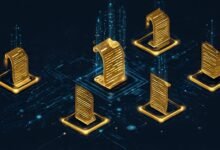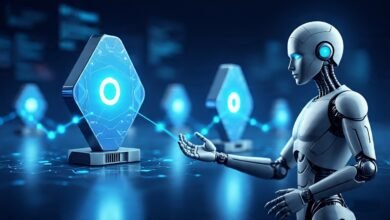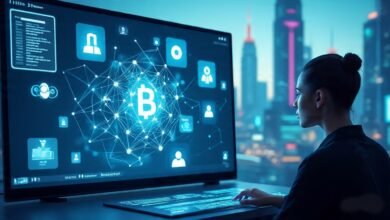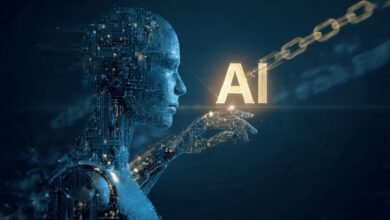Decentralized AI Building Trustless Machine Learning Systems
Explore decentralized AI and trustless machine learning systems. Learn how blockchain, federated learning, and distributed networks revolutionize.

The artificial intelligence landscape is experiencing a profound transformation as decentralized AI emerges as a compelling alternative to traditional centralized systems. In an era where a handful of tech giants control the most powerful AI models and infrastructure, trustless machine learning systems represent a paradigm shift toward democratized, transparent, and secure artificial intelligence. The integration of blockchain technology, federated learning, and distributed computing networks is reshaping how we develop, train, and deploy machine learning models.
Decentralized artificial intelligence addresses critical concerns that plague centralized AI systems: data privacy violations, computational monopolies, algorithmic bias, and lack of transparency. By distributing AI processing power across peer-to-peer networks and implementing zero-knowledge proofs, these systems eliminate single points of failure while ensuring that no central authority controls the entire infrastructure. This architectural revolution isn’t merely theoretical—projects like Bittensor, Ocean Protocol, and Gensyn are already demonstrating the viability of decentralized machine learning at scale.
The convergence of distributed AI with blockchain creates trustless protocols where participants can collaborate on model training without exposing sensitive data or requiring intermediaries. Smart contracts automate verification processes, while cryptographic techniques guarantee computational integrity. As we move deeper into 2025, decentralized AI systems become essential for developers, researchers, and organizations seeking to build the next generation of ethical, scalable, and resilient artificial intelligence. This comprehensive guide explores the architecture, benefits, challenges, and future implications of building truly decentralized and trustless machine learning ecosystems.
What is Decentralized AI
Decentralized AI represents a fundamental shift in how artificial intelligence systems are built, trained, and operated. Unlike traditional centralized AI models that depend on powerful cloud servers controlled by single entities, decentralized artificial intelligence distributes computational resources, data, and decision-making across multiple independent nodes in a network. This architectural approach leverages distributed computing principles to create AI systems where no single participant has complete control or visibility over the entire system.
The core concept behind trustless machine learning involves eliminating the need for participants to trust a central authority. Instead, cryptographic protocols and consensus mechanisms ensure that all operations are verifiable and transparent. Decentralized AI networks utilize blockchain technology to create immutable records of model training processes, parameter updates, and inference results. This transparency builds trust among participants who might otherwise be reluctant to share computational resources or data.
Key Components of Decentralized AI
Distributed data storage forms the foundation of decentralized systems, with platforms like Filecoin and Arweave providing censorship-resistant infrastructure. Peer-to-peer computing networks enable devices worldwide to contribute processing power for model training and inference. Smart contracts automate coordination between network participants, handling tasks like model aggregation, reward distribution, and quality verification without human intervention.
The integration of zero-knowledge proofs allows nodes to verify computational correctness without accessing underlying data, maintaining privacy while ensuring integrity. Federated learning protocols enable collaborative model training where data never leaves local devices, addressing privacy concerns inherent in traditional centralized approaches. These components work synergistically to create AI ecosystems that are resilient, scalable, and resistant to censorship or manipulation.
The Architecture of Trustless Machine Learning Systems
Building trustless machine learning systems requires careful architectural design that balances security, performance, and decentralization. The architecture typically consists of multiple layers, each serving specific functions while maintaining the system’s decentralized nature. These architectural components is crucial for developers and organizations implementing decentralized AI solutions.
Network Layer and Node Structure
The foundation of any trustless AI system is its network topology. Nodes in the network can include edge devices, personal computers, data centers, and specialized AI hardware. Each node operates autonomously, performing tasks like local model training, inference, or verification. Decentralized machine learning protocols use consensus mechanisms to coordinate these nodes without requiring centralized orchestration.
Network participants register through blockchain-based identity systems that provide cryptographic authentication without revealing personal information. This enables permissionless participation where anyone can contribute resources while maintaining accountability through transparent on-chain records. The architecture must handle node heterogeneity, accounting for varying computational capabilities, network conditions, and reliability levels.
Data and Model Management
Distributed AI architectures separate data ownership from model training. In federated learning systems, raw data remains on local devices while only model parameters or gradients are shared. This approach preserves privacy while enabling collaborative learning. Blockchain-based federated learning enhances this model by recording parameter updates on an immutable ledger, preventing tampering and ensuring traceability.
Model versioning and governance occur through decentralized autonomous organizations (DAOs) where token holders vote on updates, training procedures, and quality standards. Smart contracts enforce these decisions automatically, ensuring that the trustless protocol operates according to community-defined rules rather than centralized mandates.
Verification and Consensus Mechanisms
Ensuring computational integrity in trustless machine learning requires robust verification mechanisms. Zero-knowledge machine learning (zkML) allows nodes to prove they performed calculations correctly without revealing the actual computations or data. Optimistic machine learning (opML) assumes computations are correct by default but enables challenge periods where other nodes can dispute results.
Consensus protocols aggregate model updates from multiple nodes, filtering out malicious contributions through techniques like Byzantine fault tolerance. Reputation systems track node performance over time, rewarding honest participants and penalizing those who submit low-quality updates or attempt attacks. This creates economic incentives aligned with system health and model quality.
Blockchain Technology as the Foundation
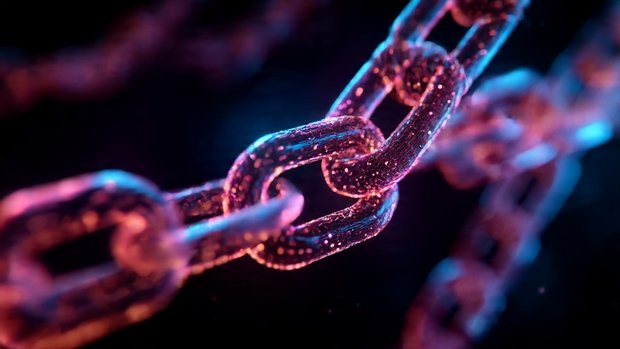
Blockchain technology serves as the backbone for decentralized AI systems, providing the infrastructure necessary for trustless coordination and transparent operations. The immutable, distributed nature of blockchain perfectly complements the requirements of decentralized machine learning, enabling features impossible in traditional centralized architectures.
Smart Contracts for AI Orchestration
Smart contracts automate complex workflows in trustless machine learning systems without requiring centralized coordinators. These self-executing programs handle model aggregation, parameter verification, reward distribution, and quality assessment. When a node submits a model update, smart contracts automatically verify its validity, aggregate it with other contributions, and distribute compensation based on predefined rules.
The use of blockchain-based smart contracts eliminates intermediaries and reduces operational costs while increasing transparency. All transactions are recorded on-chain, creating an auditable trail of model development. This transparency builds trust among participants and enables accountability mechanisms that would be difficult or impossible in centralized systems.
Consensus Mechanisms for Model Validation
Decentralized AI protocols employ various consensus mechanisms to validate model updates and training contributions. Proof-of-stake systems allow participants to validate transactions based on their stake in the network, aligning economic incentives with honest behavior. Proof-of-useful-work mechanisms ensure that computational resources are devoted to meaningful AI tasks rather than wasteful mining operations.
These consensus protocols must balance speed, security, and decentralization—the blockchain trilemma. Layer-2 scaling solutions and sharding techniques help trustless AI networks achieve the throughput necessary for real-time machine learning applications while maintaining security guarantees.
Tokenization and Incentive Structures
- Blockchain-based incentive mechanisms are crucial for sustainable decentralized AI ecosystems. Participants receive tokens for contributing computational resources, high-quality training data, or valuable model improvements. Token economics must be carefully designed to prevent gaming while rewarding genuine contributions.
- Staking mechanisms require participants to lock tokens as collateral, which can be slashed if they submit malicious updates or provide poor-quality services. This creates financial disincentives for bad actors while rewarding honest participants with additional tokens. The tokenization of AI resources creates liquid markets for computational power, data, and model access.
Federated Learning in Decentralized Environments
Federated learning represents one of the most promising approaches for building privacy-preserving AI systems in decentralized contexts. This distributed machine learning technique enables multiple parties to collaboratively train models without sharing raw data, addressing fundamental privacy concerns while leveraging diverse datasets.
Privacy-Preserving Collaborative Training
In federated learning architectures, model training occurs locally on participant devices using their private data. Only model parameters, gradients, or updates are shared with the network, never the underlying data itself. This approach is particularly valuable in healthcare, finance, and other sensitive domains where data privacy regulations restrict traditional centralized training.
Decentralized federated learning eliminates the central aggregation server that exists in traditional federated systems, replacing it with blockchain-based coordination. Participants submit encrypted model updates to smart contracts, which aggregate contributions using secure multiparty computation or homomorphic encryption. This ensures that no single entity can access individual updates or reconstruct private training data.
Addressing Non-IID Data Challenges
One significant challenge in federated learning systems is handling non-independent and identically distributed (non-IID) data. Different participants possess datasets with varying distributions, which can cause model convergence issues and bias. Decentralized AI protocols employ several strategies to address this challenge.
Data augmentation techniques generate synthetic samples that balance dataset distributions without requiring actual data sharing. Personalized federated learning allows each participant to maintain slightly different local models while contributing to a shared global model. Hierarchical aggregation structures group similar participants, aggregating their updates before combining them into the global model.
Secure Aggregation and Model Updates
- Trustless federated learning requires secure aggregation protocols that prevent individual model updates from being inspected while enabling accurate global model computation. Differential privacy techniques add calibrated noise to gradients before sharing, preventing the extraction of information about individual data points while preserving overall model utility.
- Blockchain-empowered federated learning records aggregation processes on-chain, creating transparent audit trails without compromising participant privacy. Cryptographic commitments allow participants to prove they followed the protocol correctly without revealing their actual contributions. These techniques balance the transparency needed for trustless operation with the privacy requirements of sensitive applications.
Zero-Knowledge Proofs and Cryptographic Verification
Zero-knowledge proofs (ZKPs) represent a breakthrough in enabling trustless machine learning by allowing participants to verify computational correctness without accessing underlying data or models. This cryptographic technique is fundamental to building decentralized AI systems that maintain privacy while ensuring integrity.
Understanding Zero-Knowledge Machine Learning
Zero-knowledge machine learning (zkML) enables a prover to demonstrate that they correctly executed a machine learning computation without revealing the inputs, model parameters, or intermediate states. This capability is crucial for decentralized AI, where participants need to verify that others performed training or inference correctly without trusting them or accessing their private data.
ZKP systems like zk-SNARKs (Zero-Knowledge Succinct Non-Interactive Arguments of Knowledge) generate compact proofs that can be verified quickly, even for complex computations. In trustless AI networks, nodes can prove they contributed valid model updates by generating cryptographic proofs that smart contracts verify automatically.
Applications in Model Training and Inference
Zero-knowledge proofs enable several powerful capabilities in decentralized machine learning systems. During model training, participants can prove they used specific datasets or followed particular training procedures without revealing the data itself. This addresses concerns about data quality, provenance, and compliance with training protocols.
For inference, zkML allows model owners to provide predictions as a service while keeping model parameters confidential. Clients receive correct predictions along with cryptographic proofs of correctness, eliminating the need to trust the service provider. This creates new business models for AI-as-a-service in trustless environments.
Challenges and Optimization
Despite their power, zero-knowledge proofs face computational overhead challenges. Generating proofs for complex neural networks can be thousands of times slower than direct computation. Researchers are developing optimized ZKP systems specifically for machine learning workloads, reducing proof generation time through circuit optimizations and hardware acceleration.
Hybrid approaches combine ZKPs with other verification techniques like optimistic verification, where proofs are only generated when disputes arise. This balances security with performance, enabling trustless machine learning at practical scales.
Distributed Computing Networks for AI
Distributed computing networks provide the computational infrastructure necessary for decentralized AI to compete with centralized alternatives. By aggregating idle computational resources from devices worldwide, these networks create massive processing capacity without requiring centralized data centers.
Peer-to-Peer Resource Sharing
- Decentralized AI platforms like Gensyn and io.net enable device owners to contribute computational power in exchange for token rewards. This creates liquid markets for GPU time, enabling price discovery and efficient resource allocation. Participants can offer everything from personal computers to professional mining rigs, democratizing access to AI computation.
- Trustless protocols ensure fair compensation by verifying that nodes actually performed the work they claim. Cryptographic attestations and random verification sampling detect cheating while minimizing overhead. Smart contracts automatically distribute payments based on verified contributions, eliminating payment disputes and intermediaries.
Handling Heterogeneous Hardware
- Distributed AI networks must accommodate diverse hardware with varying capabilities, from smartphones to high-end data center GPUs. Task allocation algorithms match computational jobs with appropriate hardware, ensuring efficient resource utilization. Simpler tasks like inference can run on modest devices, while intensive training jobs are routed to powerful nodes.
- Device-agnostic verification protocols ensure that computational results are correct regardless of the hardware used. This prevents nodes with specialized equipment from gaming the system while enabling maximum participation. Benchmarking systems calibrate reward structures based on actual device capabilities and market supply and demand.
Scalability and Performance Optimization
Achieving competitive performance in decentralized machine learning requires sophisticated optimization. Techniques like gradient compression reduce communication overhead in distributed training. Model parallelism splits large models across multiple nodes, enabling training of models too large for individual devices.
Edge computing integration brings computation closer to data sources, reducing latency and bandwidth requirements. This is particularly valuable for real-time AI applications like autonomous vehicles or industrial automation. By strategically distributing workloads across the network topology, trustless AI systems can match or exceed the performance of centralized alternatives.
Benefits of Decentralized AI Systems
Decentralized AI offers numerous advantages over traditional centralized approaches, addressing fundamental limitations while enabling new capabilities. These benefits are essential for organizations evaluating whether to adopt trustless machine learning systems.
Enhanced Privacy and Data Security
- Privacy preservation is perhaps the most significant advantage of decentralized artificial intelligence. In traditional systems, users must send sensitive data to centralized servers, creating privacy risks and regulatory compliance challenges. Federated learning and edge computing keep data on local devices, eliminating these concerns while still enabling sophisticated model training.
- Blockchain-based identity systems provide pseudonymous participation, allowing users to contribute to AI development without revealing personal information. Cryptographic techniques like homomorphic encryption enable computation on encrypted data, providing an additional privacy layer. These capabilities make decentralized AI particularly attractive for healthcare, finance, and other privacy-sensitive domains.
Democratized Access to AI Resources
- Decentralized AI networks eliminate barriers to entry by allowing anyone to contribute computational resources or access AI services. Small organizations and independent researchers can train models without purchasing expensive hardware or subscribing to costly cloud services. This democratization accelerates innovation by enabling experimentation that would be economically infeasible in centralized systems.
- Permissionless participation ensures that no gatekeepers can exclude participants based on arbitrary criteria. This creates more diverse and representative AI ecosystems, reducing bias and improving model fairness. Communities can collectively develop AI systems aligned with their values rather than accepting solutions imposed by centralized providers.
Resilience and Censorship Resistance
Trustless AI systems inherit blockchain’s resilience to censorship and single points of failure. With data and computation distributed across thousands of nodes, the system continues functioning even if individual nodes fail or are attacked. This robustness is crucial for critical applications that require high availability.
No central authority can shut down, censor, or manipulate decentralized machine learning networks. This property is valuable in contexts where centralized AI providers might face political pressure or regulatory action. Distributed AI enables freedom of innovation and expression, particularly important in authoritarian contexts or controversial research areas.
Transparent and Auditable Operations
Blockchain-based AI systems record all operations on immutable, transparent ledgers. This auditability enables stakeholders to verify that models were trained correctly, identify sources of bias, and ensure compliance with ethical guidelines. Unlike black-box centralized systems, decentralized AI provides clear provenance for model decisions and outcomes.
Transparent governance through DAOs allows communities to collectively decide on model updates, training procedures, and acceptable use policies. This democratic approach creates accountability mechanisms lacking in centralized systems controlled by corporate interests.
Challenges and Limitations
Despite significant advantages, decentralized AI systems face substantial challenges that must be addressed for widespread adoption. These limitations are crucial for researchers and practitioners working to advance trustless machine learning technology.
Performance and Efficiency Trade-offs
- Decentralized architectures inherently sacrifice some efficiency for security and decentralization. Communication overhead in distributed training can significantly slow convergence compared to centralized systems, where all data resides in one location. Network latency and bandwidth constraints further impact performance, particularly for large models requiring frequent parameter synchronization.
- Blockchain consensus mechanisms add computational overhead and latency to operations that would be near-instantaneous in centralized systems. Verifying zero-knowledge proofs requires additional processing that can be orders of magnitude slower than direct execution. These performance penalties must be weighed against the benefits of trustlessness and decentralization.
Coordination and Governance Complexity
Managing decentralized AI networks without centralized authority introduces governance challenges. Achieving consensus on model updates, protocol changes, or dispute resolution requires sophisticated coordination mechanisms. DAO governance can be slow and contentious, particularly when participants have conflicting interests.
Free-rider problems occur when participants benefit from the network without contributing proportionally. Designing incentive structures that prevent exploitation while encouraging genuine participation requires careful economic modeling. Detecting and punishing malicious behavior in trustless systems is more complex than in centralized platforms with administrative control.
Security Vulnerabilities
- Decentralized machine learning faces unique security threats. Poisoning attacks involve malicious participants submitting corrupted model updates to degrade overall performance or inject backdoors. Byzantine nodes might collude to manipulate consensus or exhaust network resources through denial-of-service attacks.
- Model extraction attacks attempt to steal intellectual property by querying models and reconstructing their parameters. While cryptographic techniques provide protection, they also add complexity and potential vulnerabilities if implemented incorrectly. Security in trustless systems requires constant vigilance and updating of defensive mechanisms.
Scalability Limitations
Current blockchain infrastructure struggles to handle the throughput required for large-scale AI applications. Transaction costs on popular blockchains can make frequent model updates economically infeasible. Layer-2 solutions and alternative consensus mechanisms improve scalability but introduce additional complexity and potential centralization.
The computational overhead of cryptographic verification limits the complexity of models that can be efficiently trained or deployed in decentralized environments. As AI models grow larger and more sophisticated, scaling trustless verification becomes increasingly challenging.
Real-World Applications and Use Cases
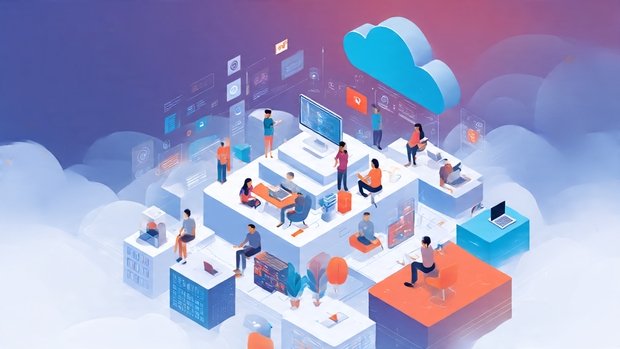
Decentralized AI is transitioning from a theoretical concept to a practical implementation across various industries. These real-world applications demonstrate the viability and value of trustless machine learning systems.
Healthcare and Medical Research
Federated learning enables hospitals and research institutions to collaboratively train diagnostic models without sharing patient data, addressing HIPAA and GDPR compliance challenges. Decentralized AI platforms facilitate rare disease research by allowing global collaboration on sensitive medical data while preserving privacy.
Pharmaceutical companies use blockchain-based AI for drug discovery, training models on proprietary compound libraries without exposing competitive information. Smart contracts manage intellectual property rights and revenue sharing from AI-discovered treatments, creating transparent incentive structures for collaborative research.
Financial Services and DeFi
Decentralized finance (DeFi) protocols leverage trustless AI for fraud detection, risk assessment, and algorithmic trading. Banks can collaborate on anti-money-laundering models using federated learning without exposing customer transaction data. Blockchain-based credit scoring systems provide transparent, auditable assessments while protecting borrower privacy.
Predictive analytics in decentralized finance enables more sophisticated automated market makers and lending protocols. AI-powered smart contracts execute complex financial strategies without requiring trust in centralized intermediaries, expanding the capabilities of DeFi ecosystems.
Supply Chain and Logistics
- Distributed AI systems optimize global supply chains by training models on data from multiple companies without revealing competitive information. Blockchain integration provides end-to-end transparency and traceability while maintaining commercial confidentiality. Predictive maintenance models trained through federated learning improve operational efficiency across industries.
- Trustless AI enables competitive companies to collaborate on industry-wide optimization problems, improving sustainability and reducing waste. Smart contracts automate compliance verification and quality assurance throughout supply chains, reducing costs and delays.
Content Creation and Digital Media
- Decentralized AI platforms enable collaborative development of generative models for art, music, and text. Creators retain ownership of their contributions while benefiting from collective model improvements. Blockchain-based attribution systems ensure proper crediting and compensation when AI models trained on artist data generate new works.
- Censorship-resistant content moderation models trained through federated learning balance safety with freedom of expression. Communities can develop context-specific moderation systems aligned with their values rather than accepting centralized platform policies.
Key Projects and Platforms
Several pioneering projects are building the infrastructure for decentralized AI, each approaching the challenge from different angles. These platforms provide insight into the practical state of trustless machine learning.
Bittensor: Decentralized Machine Learning Marketplace
Bittensor creates a peer-to-peer market for machine intelligence, where AI models compete to provide the best predictions and responses. Participants stake tokens to register models, earning rewards based on performance as assessed by other network participants. This creates economic incentives for continuous model improvement and innovation.
The Bittensor protocol uses consensus mechanisms to aggregate contributions from multiple models, creating ensemble predictions that often outperform individual centralized alternatives. Subnetworks specialize in different domains, from language modeling to image generation, creating a diverse AI ecosystem.
Ocean Protocol: Data Marketplace
Ocean Protocol enables secure data sharing and monetization through blockchain-based data marketplaces. Data providers maintain control over their information while making it available for AI training through privacy-preserving computation. Smart contracts automate licensing, access control, and revenue distribution.
Researchers and companies can discover and purchase relevant datasets without compromising data sovereignty. Compute-to-data approaches allow AI training on sensitive data without the data ever leaving its secure environment, addressing privacy and competitive concerns.
Gensyn: Decentralized ML Compute Network
Gensyn focuses on democratizing access to computational resources for machine learning. The platform enables anyone with GPU hardware to contribute processing power for AI training, earning tokens in return. Verification protocols ensure that computations were performed correctly despite the untrusted nature of network participants.
By aggregating idle GPUs worldwide, Gensyn aims to create computational capacity rivaling centralized cloud providers at lower costs. The platform’s device-agnostic approach accommodates diverse hardware, from gaming PCs to professional mining operations.
Filecoin and Arweave: Decentralized Storage
Distributed storage networks provide the data infrastructure necessary for decentralized AI. Filecoin uses proof-of-replication and proof-of-spacetime to incentivize reliable storage, while Arweave offers permanent storage through a one-time fee model. These platforms enable censorship-resistant data storage for AI training datasets and model weights.
Integration with decentralized compute networks creates complete infrastructure stacks for trustless AI development. Researchers can store training data on decentralized storage, train models using distributed computing, and deploy inference services—all without relying on centralized cloud providers.
The Future of Decentralized AI
Decentralized artificial intelligence stands at an inflection point as technology matures and adoption accelerates. Several trends will shape the evolution of trustless machine learning systems in the coming years.
Integration with Emerging Technologies
Quantum computing will eventually impact both centralized and decentralized AI, requiring new cryptographic techniques to maintain security while enabling exponentially faster computation. Neuromorphic hardware specifically designed for AI workloads will improve efficiency in distributed networks, reducing energy consumption and costs.
6G networks with ultra-low latency and massive bandwidth will eliminate many current performance bottlenecks in decentralized machine learning. Edge computing infrastructure will continue expanding, bringing computational resources closer to data sources and users.
Regulatory and Policy Developments
Governments worldwide are developing AI regulations addressing privacy, fairness, and accountability. Decentralized AI systems are well-positioned to comply with emerging requirements through built-in privacy preservation and transparent auditability. However, regulatory uncertainty remains, particularly regarding liability and governance in trustless environments.
International cooperation will be necessary to establish standards for decentralized AI, ensuring interoperability while respecting regional differences in privacy laws and ethical frameworks. Open-source development of decentralized protocols will likely accelerate as organizations recognize the strategic importance of avoiding vendor lock-in.
Economic and Social Impact
Decentralized AI could fundamentally reshape power dynamics in technology and society. By democratizing access to AI capabilities, these systems may reduce wealth concentration and enable more distributed innovation. New economic models for data ownership and algorithmic governance will emerge as blockchain-based systems mature.
However, challenges remain in ensuring equitable participation. Digital divides in internet access and hardware availability could create new forms of exclusion. Addressing these disparities will be crucial for realizing the full potential of decentralized artificial intelligence.
More Read: Blockchain for AI Decentralized Machine Learning Networks
Conclusion
Decentralized AI represents a transformative approach to building trustless machine learning systems that address fundamental limitations of centralized architectures. By leveraging blockchain technology, federated learning, zero-knowledge proofs, and distributed computing networks, these systems create AI ecosystems that are more private, democratic, resilient, and transparent. Real-world implementations across healthcare, finance, supply chain, and creative industries demonstrate practical viability, while pioneering platforms like Bittensor, Ocean Protocol, and Gensyn build the infrastructure for widespread adoption.
Despite challenges around performance, scalability, and governance, the trajectory is clear—decentralized artificial intelligence will play an increasingly important role in shaping how humanity develops and deploys AI. As we navigate complex ethical questions and regulatory landscapes, trustless machine learning offers a compelling path toward AI systems that serve broad societal interests rather than narrow corporate agendas, ultimately creating more equitable, innovative, and robust technological futures.

